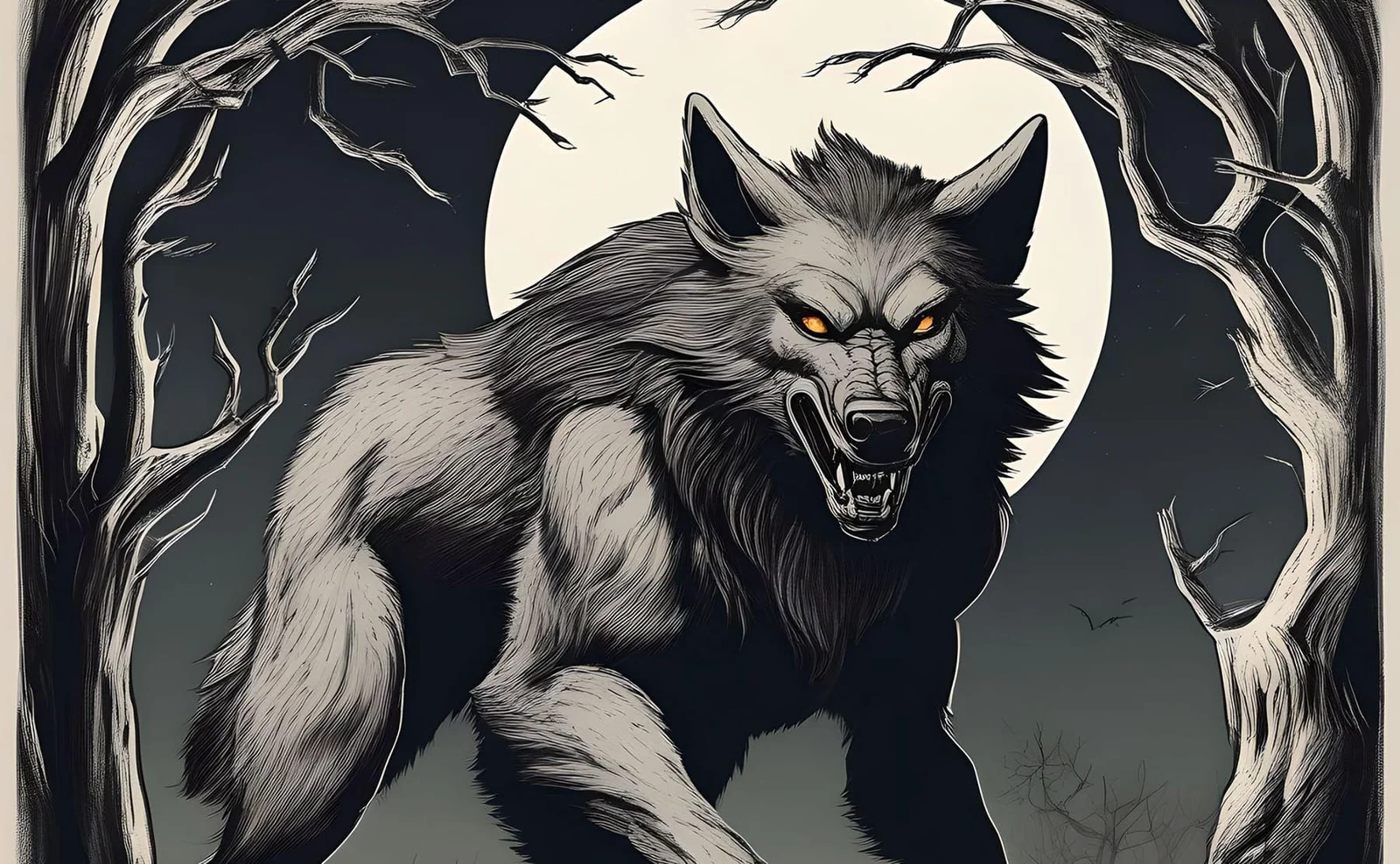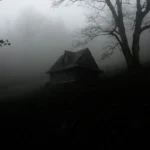
Werewolf Lore: A Journey Through History and Culture
(Originally written on cafecrashdown.com)
Have you ever felt a shiver run down your spine on a moonlit night, wondering what lurks in the shadows? Join us on a journey through the eerie world of werewolves, where myth and reality collide. Werewolves, the shape-shifters of legend, have long been a source of fascination and fear. This post delves into the rich tapestry of werewolf lore, tracing its roots from ancient myths to modern-day interpretations.

The Evolution of the Werewolf
Early Myths and Legends
The concept of the werewolf, or lycanthrope, has been a part of human mythology for millennia. Ancient Greek mythology speaks of King Lycaon, who was transformed into a wolf by Zeus as punishment for his impiety. Similarly, the Norse sagas tell tales of warriors donning wolf pelts to gain the ferocity and strength of the animal.

Medieval Europe
During the Middle Ages, werewolf hysteria gripped Europe. The Church viewed werewolves as agents of the devil, and countless individuals were accused of lycanthropy. These dark times gave rise to grim tales of men transforming into wolves under the full moon, preying on livestock and humans alike.
Literature and Film
The 19th and 20th centuries saw the werewolf enter the realm of literature and film, evolving significantly in the process. Bram Stoker’s “Dracula” introduced the concept of the werewolf as a servant of vampires. Later, Universal Pictures’ 1941 film “The Wolf Man” cemented many of the tropes we associate with werewolves today, such as the transformative power of the full moon and the struggle between human and beast.

Cultural Significance of Werewolves
Reflecting Societal Fears
Werewolf tales often reflect societal fears and anxieties. In medieval Europe, werewolves symbolized the chaotic and untamed wilderness that lay beyond the safety of settled lands. They embodied fears of predation and the unknown. In modern times, werewolves can represent internal struggles, such as the battle between one’s civilized self and primal instincts.
Psychological Symbolism
Psychologically, werewolves can be seen as a metaphor for the duality of human nature. The transformation from human to wolf signifies a loss of control and a surrender to baser instincts. This duality is a common theme in many horror stories, exploring the thin line between humanity and monstrosity.

Famous Werewolves in History and Literature
Peter Stubbe
One of the most infamous historical werewolves is Peter Stubbe, a German farmer accused of being a werewolf in the 16th century. His gruesome trial and execution became the stuff of legend, highlighting the hysteria and fear surrounding werewolves at the time.

“The Werewolf of Paris” by Guy Endore
Published in 1933, this novel is often considered the “Dracula” of werewolf literature. It tells the story of Bertrand Caillet, a man cursed with lycanthropy, against the backdrop of the Franco-Prussian War. The book explores themes of isolation and the monstrous aspects of human nature.

“The Wolf Man” (1941)
This classic film introduced audiences to Larry Talbot, a man bitten by a werewolf and doomed to transform under the full moon. The film’s portrayal of lycanthropy as a tragic curse has influenced countless werewolf narratives since.

Modern Interpretations of the Werewolf
Movies and TV Shows
In contemporary culture, werewolves continue to captivate audiences. Films like “An American Werewolf in London” and the “Underworld” series explore the horror and allure of werewolves. TV shows such as “Teen Wolf” and “True Blood” present werewolves in various lights, from high school students dealing with supernatural puberty to powerful beings navigating a supernatural political landscape.
Literature
Modern literature offers a wide range of werewolf stories, from horror to romance. Authors like Patricia Briggs and Ilona Andrews have created an entire series centered around werewolf characters. These stories often blend traditional lore with new twists, such as werewolves in urban fantasy settings.
Video Games
Video games also feature werewolves prominently. Titles like “The Elder Scrolls V: Skyrim” allow players to become werewolves, exploring the power and consequences of lycanthropy. These interactive experiences offer a new way to engage with werewolf lore, allowing players to immerse themselves in the myth.

Werewolf lore has evolved dramatically over the centuries, yet its core themes remain relevant.
Whether seen as a reflection of societal fears, a symbol of internal struggle, or a source of thrilling entertainment, werewolves continue to captivate and terrify. Their enduring appeal lies in their ability to straddle the line between human and beast, reminding us of the primal forces that reside within us all.
We hope you’ve enjoyed this deep dive into the world of werewolves.
What are your favorite werewolf stories? Share them in the comments below, and let’s continue the conversation! If you’re as fascinated by folklore and horror culture as we are, make sure to follow our page for more engaging content.



